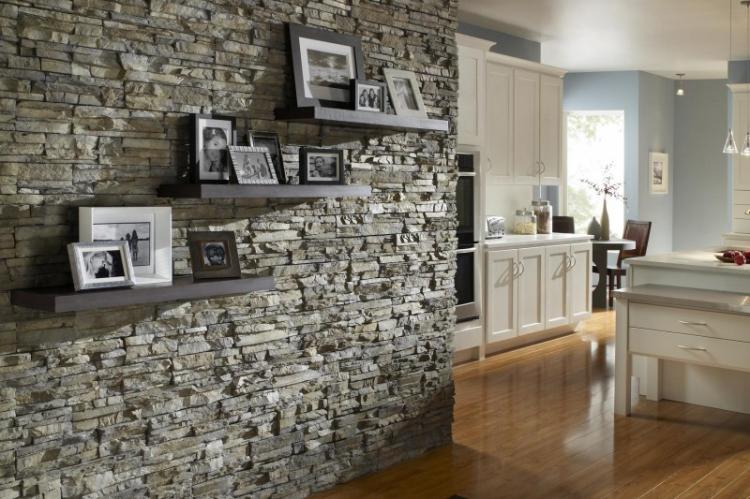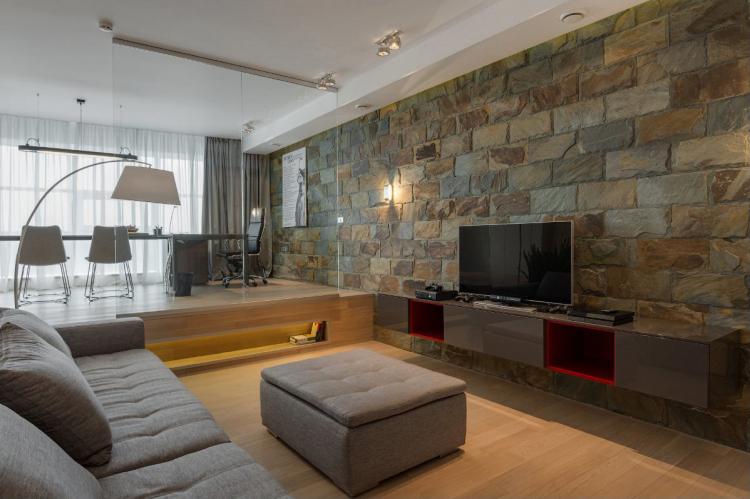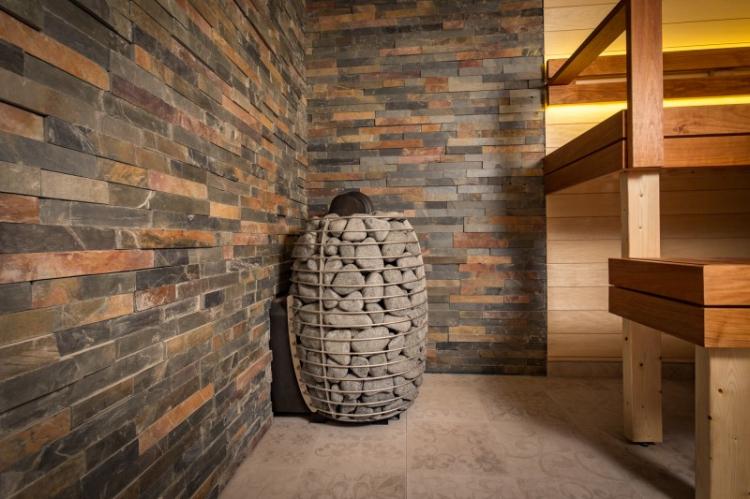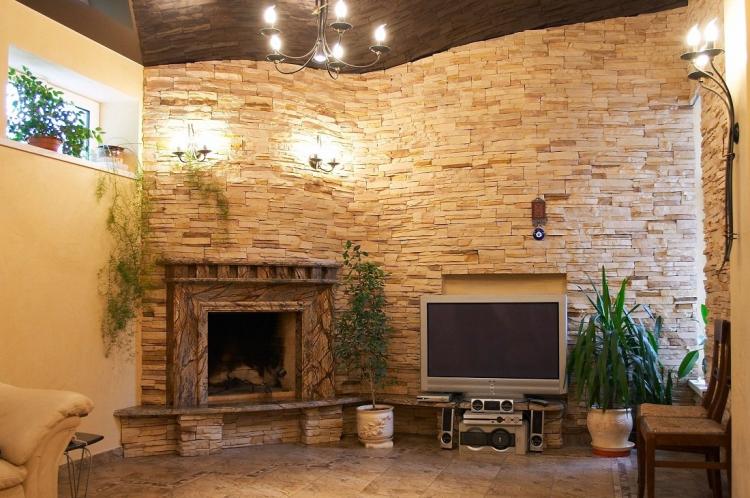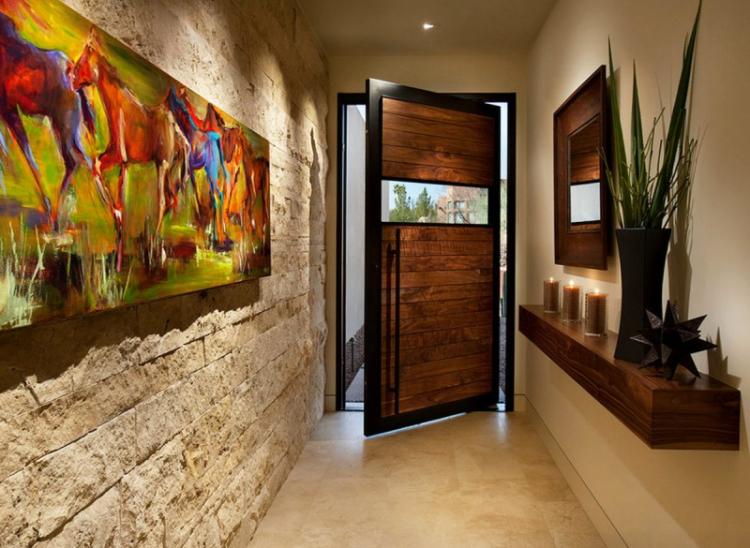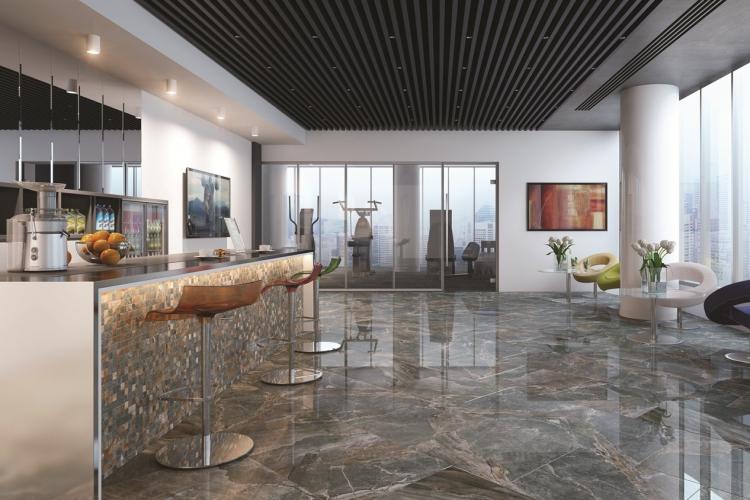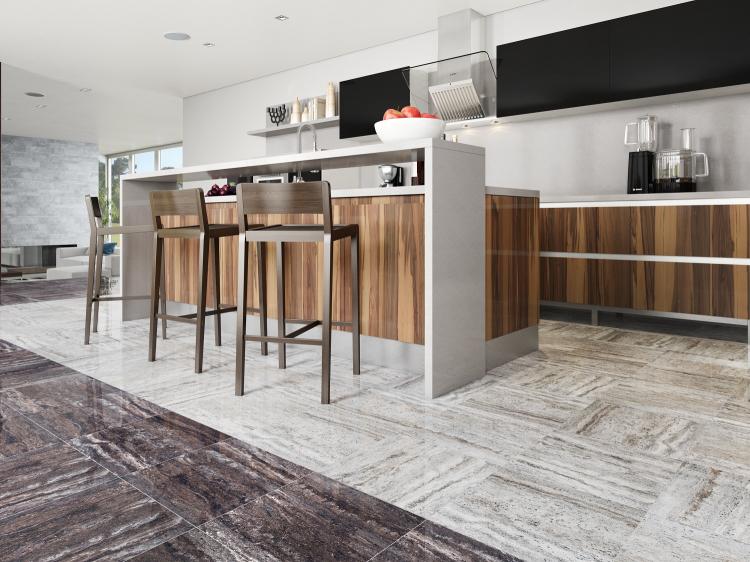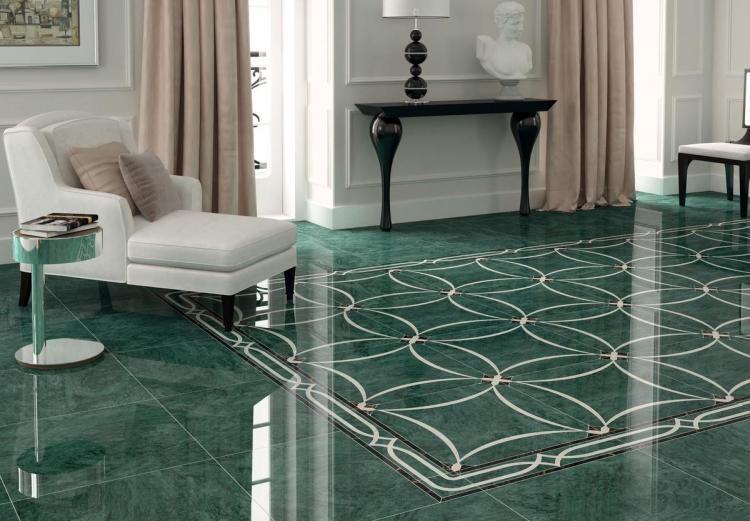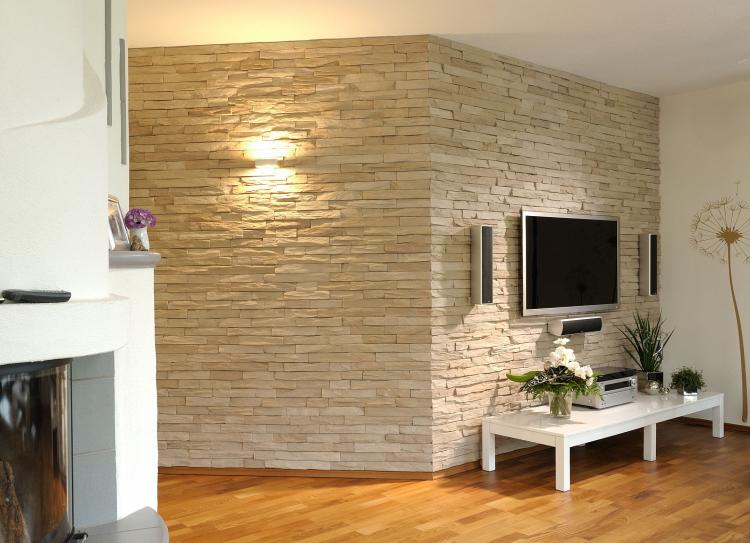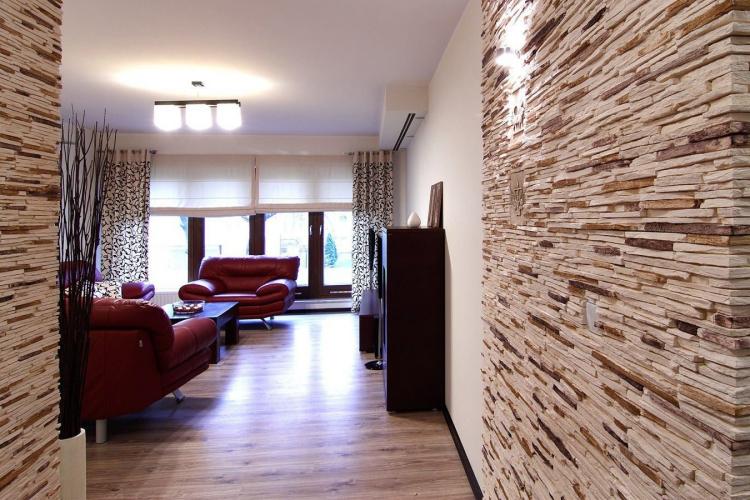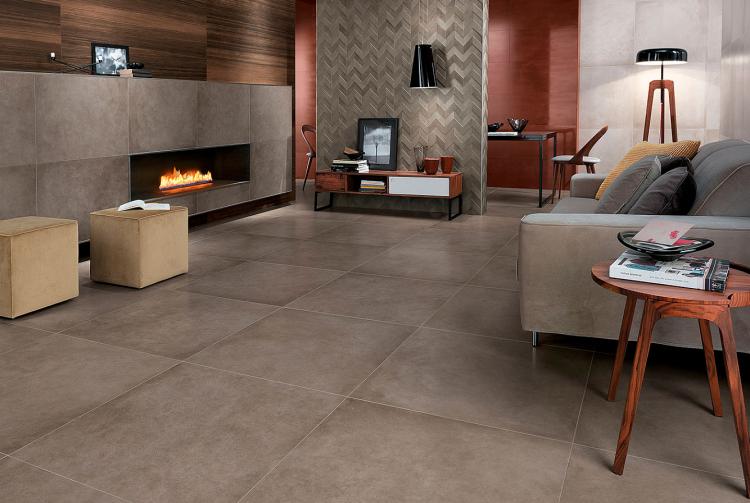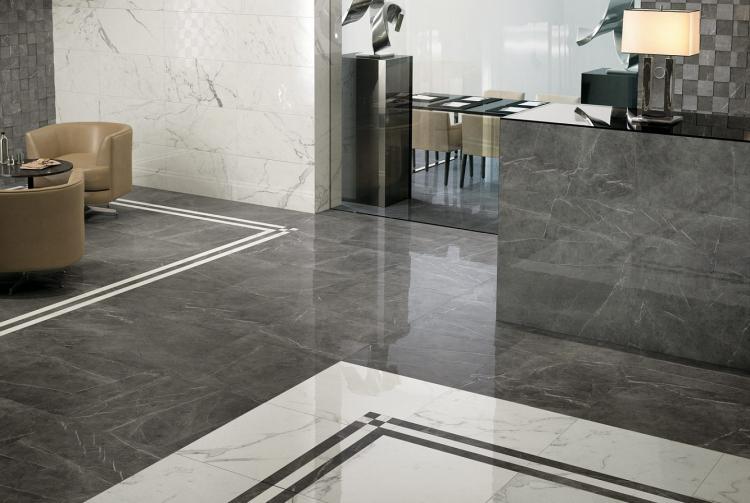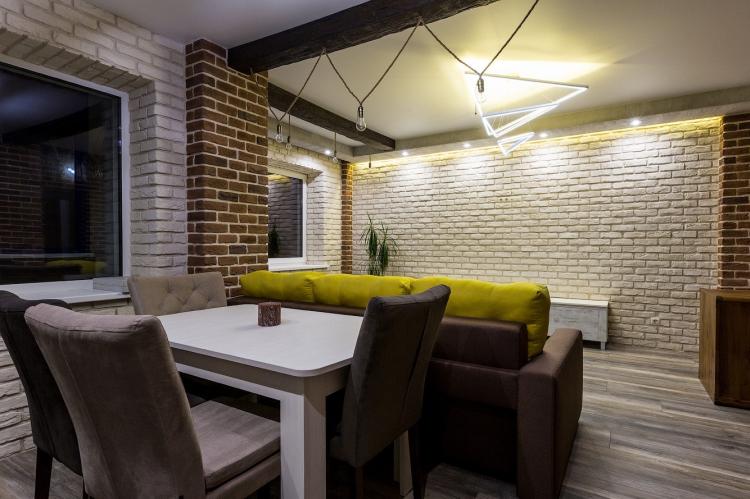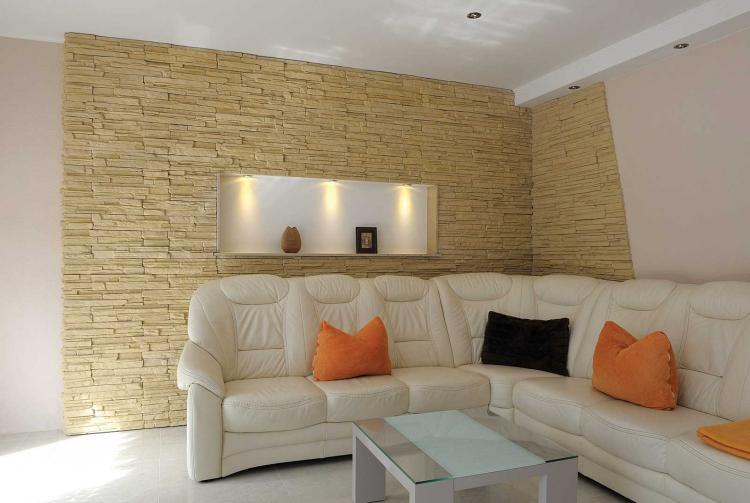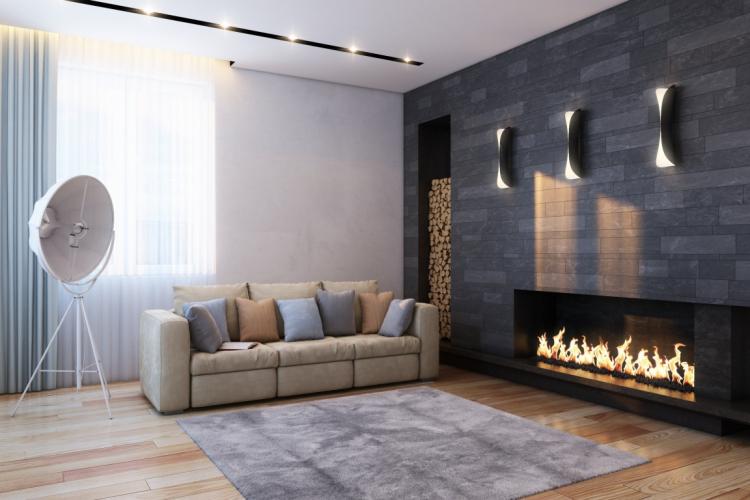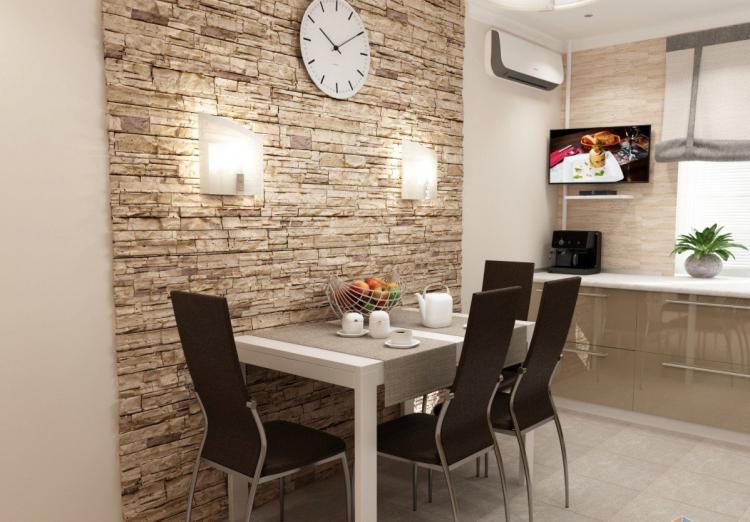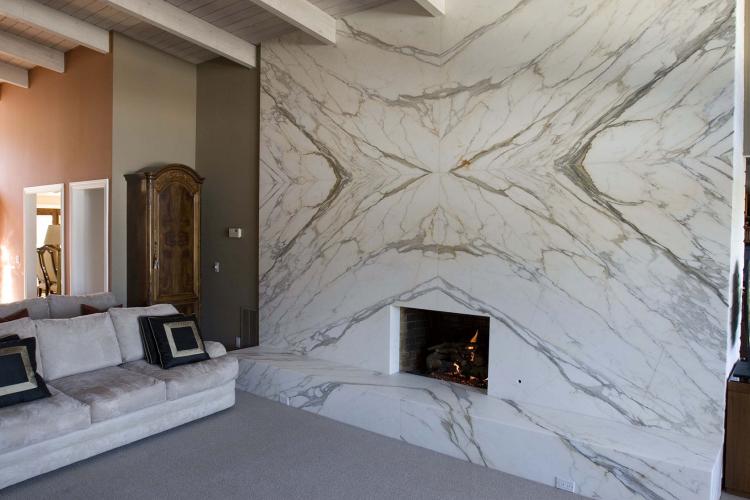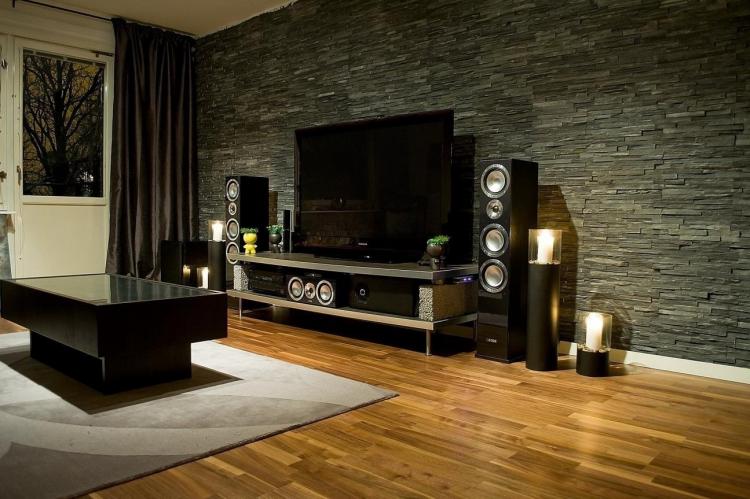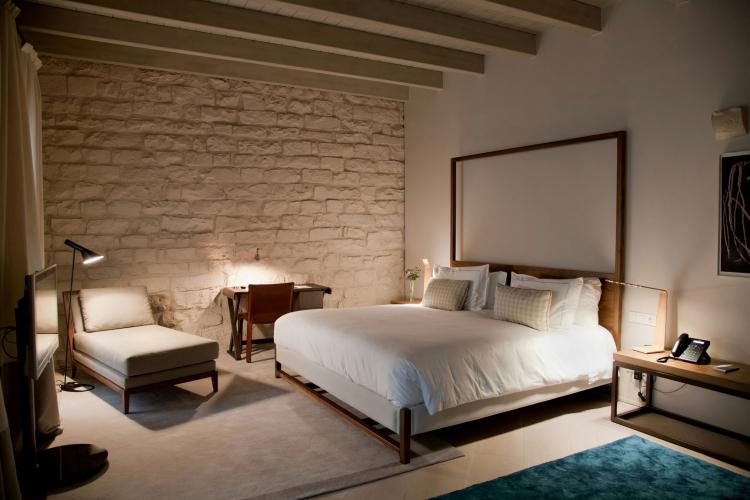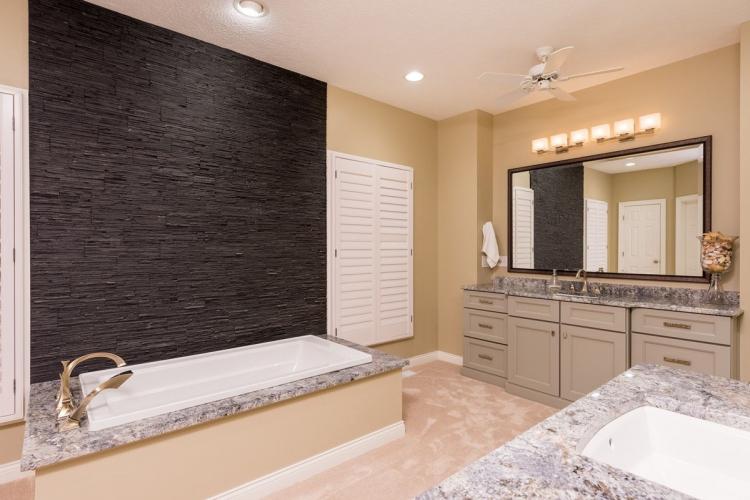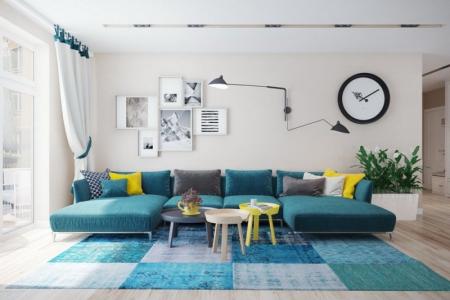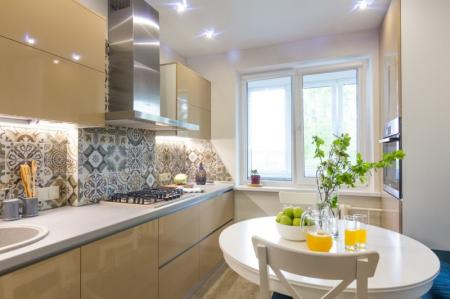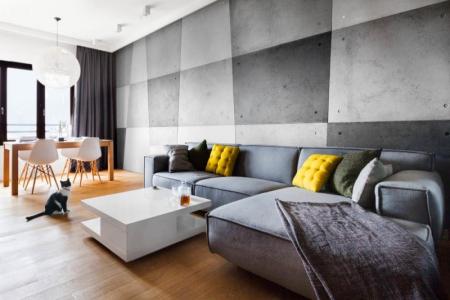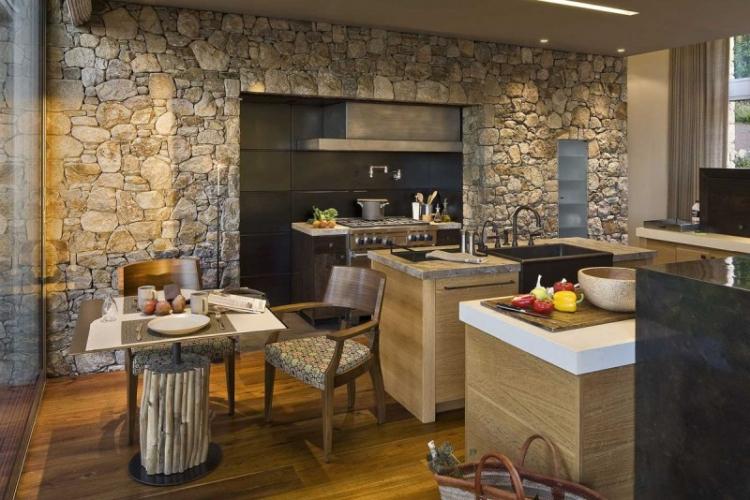
Natural stone is the oldest building material used by primitive tribes and legendary ancient peoples. Soon only the rich could afford beautiful and solid stone houses. But now everything has changed, and decorative stone has begun to be actively used in the interior. After all, outwardly, it is almost indistinguishable from the present, but it is cheaper and easier to work with!
What it is?
In fact, a decorative stone is a specific tile. It is distinguished from the finishing tile by a texture that imitates real breeds. It is used for exterior and interior work, in particular in interiors.
There are several reasons for this: simplicity in care and operation, ease of processing and installation, the cost is lower than that of natural granite or marble.
The material itself is lighter in weight. Dirt, grease and other stains are easily washed off from the coating. The homogeneous structure ensures the high strength of the material, and the accuracy of the geometry is achieved through artificial manufacturing. Artificial stone is resistant to moisture, parasites, fungus, mold, temperature extremes and other external influences.
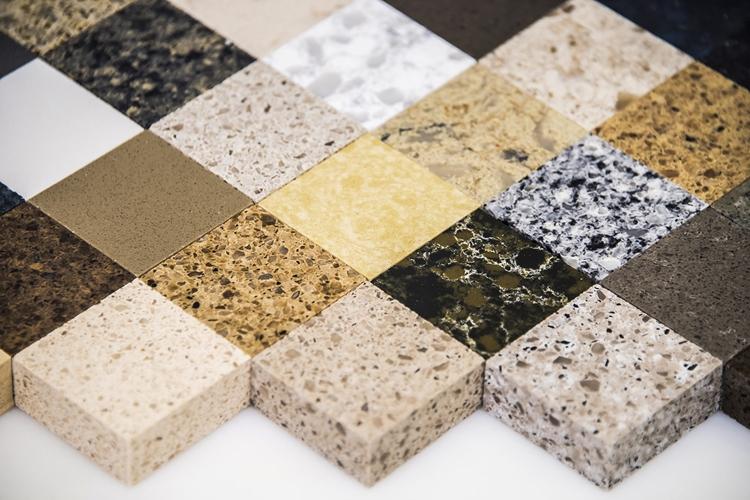
Types of decorative stone
The properties of a decorative stone depend on the material from which it is made. Be sure to take this into account when choosing, because the characteristics can vary significantly.
Decorative concrete stone
The composition includes cement, sand, plasticizers, reinforcing components, pigments and fillers. Expanded clay, pumice, ceramic chips are most often used. This is the most common and versatile type.
Concrete is a very flexible material and a lot of impurities or additives can be introduced into it. Therefore, it allows you to create an imitation of almost any natural stone.
The finished tile is used for wall cladding. But that's not all! Paving, plinths, curbs, cornices and decor for natural rocks are made of concrete.
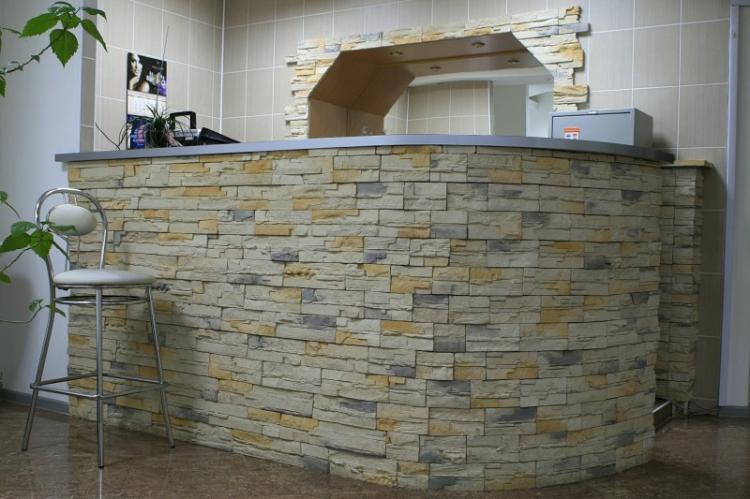
Acrylic decorative stone
It is a cladding material with a variety of colors, shapes and sizes. It is absolutely safe and suitable even for bathrooms and bedrooms.
It contains acrylic resins, aluminum hydroxide, pigments and fillers. This is the most maintainable decorative stone. The adhesive seams are almost invisible and the surface is perfectly sanded.
It is almost impossible to deform acrylic stone, it does not burn and has the highest refractory properties. It can be used in living rooms, bathrooms, restaurants, medical institutions.
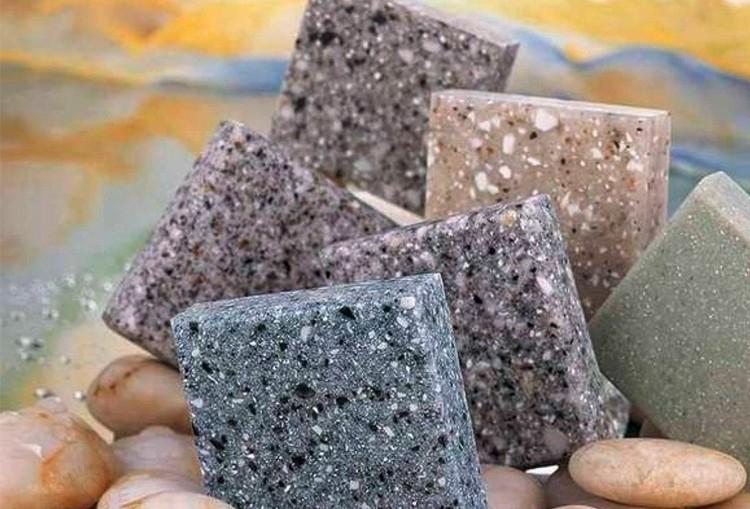
Decorative plaster stone
It is lightweight, inexpensive, practical, and affordable. It is pleasant and easy to work with, and it has been used in interiors for many years. The texture resembles sandstone, so most often a decorative gypsum stone is painted just for it.
Among the disadvantages - it is very sensitive to moisture. It is not recommended for use in the bathroom or in the kitchen, but it is absolutely eco-friendly and breathable.
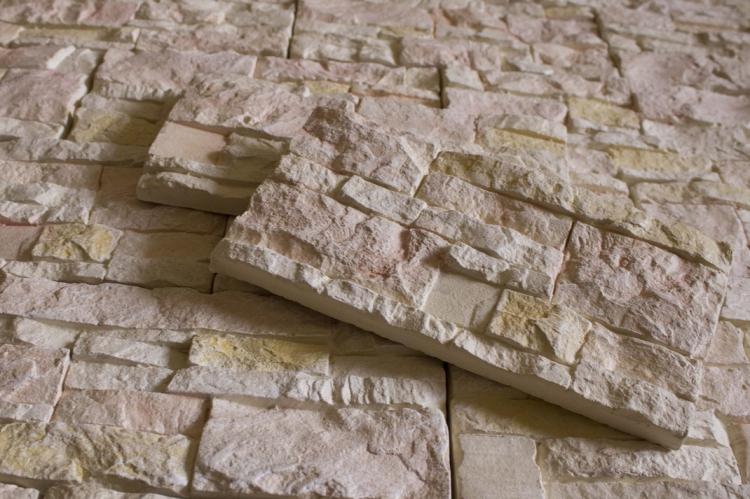
Porcelain stoneware
It contains several types of clay, feldspar, minerals and pigments. The mixture is pressed and fired, so this artificial stone is stronger.
But outwardly, porcelain stoneware looks more like a facing tile than a lump of natural granite. But it is resistant to temperature extremes and it is used in warm floors.

Quartz decorative stone
You have to pay for the beauty and elegance of quartz: you need to work with it in defense. Do not allow stone dust to enter the respiratory tract.
But the scope of application is almost unlimited: from internal and external walls to steps, stoves, pools, sinks and bathtubs. Due to its high hygienic qualities, it can be used in public areas: restaurants, salons, saunas.
Artificial quartz stone is not afraid of frost and does not fade.You will need diamond discs for cutting. Thanks to natural breeds as a filler, it is a very durable material.
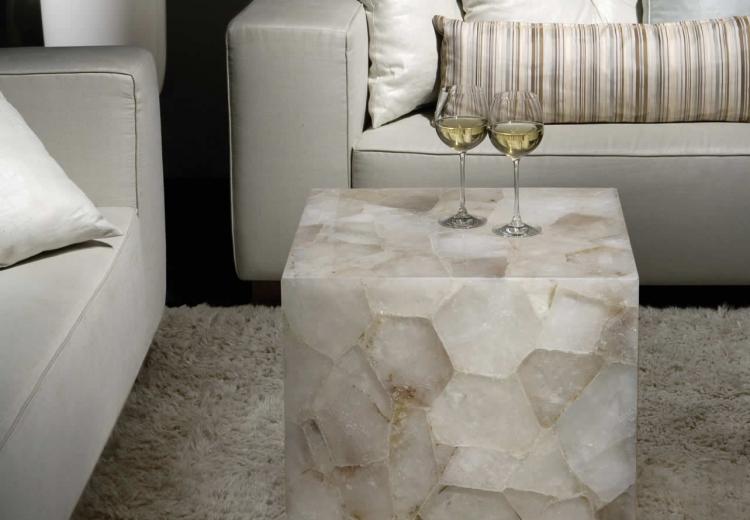
Conglomerate
At its core, it resembles a quartz stone. Chips of natural marble and granite are used only for creation. And also - limestone, quartz sand, pigments.
Outwardly, it is almost impossible to distinguish it from a lump of natural rock that was in the composition. But it is much lighter. It is the conglomerate that is most often used for countertops and finishing the work area.

Decorative stone in the hallway
Decorating with decorative stone will decorate even a small and cramped hallway. She will immediately look more comfortable and elegant, especially in light colors.
Forged elements, lanterns, mirrors in massive antique frames will complement the stone decoration.

Decorative stone in the living room
In the living room, the properties of decorative stone are fully revealed. It is used for floors, walls, stairs, arches and decorative structures.
Facing fireplaces made of artificial stone will cost several times cheaper than natural, but it looks no worse.
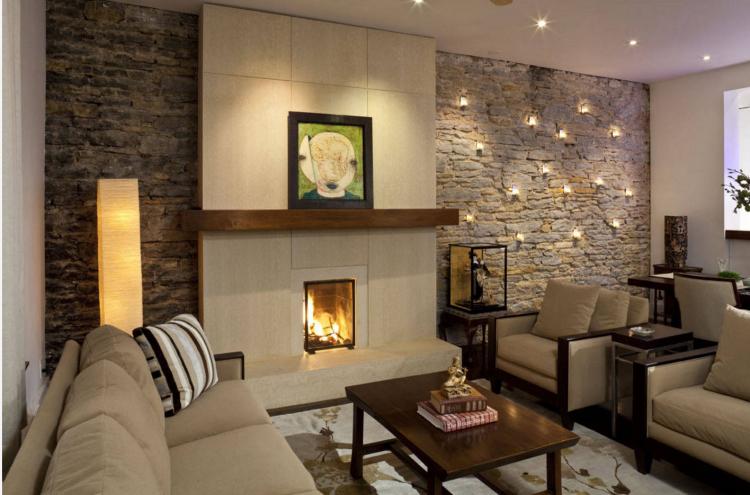
Decorative stone in the kitchen
The dense homogeneous structure, as well as high mechanical strength, make it possible to use decorative stone for cladding the working area and even for the manufacture of countertops.
It does not absorb odors and stains, just wipe the stained surface with a rag. And on the countertop there are no scratches and damage from the dishes of the pots.
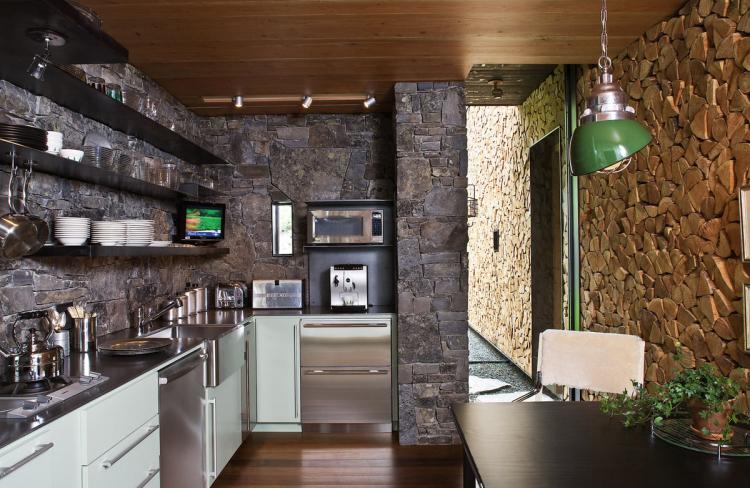
Decorative stone in the bathroom
A bathroom is primarily humidity and temperature fluctuations. Therefore, finishing with resistant stone is as common as ceramic tiles.
The stone surface is easy to clean and handle. Hygiene is an essential requirement for bathroom furnishings.
Some types of artificial stone are used to make bathtubs and sinks themselves. The material does not absorb moisture, does not grow moldy, does not rot and does not come off.

Decorative stone in the bedroom
It may seem that the stone texture is too cold for the bedroom. But this is a godsend for any classic interiors.
It is not necessary to cover all walls and floors with decorative stone. Individual elements look stylish and impressive: panels, window sills, tables, designer inserts.

Decorative stone in the children's room
Stone fragments of decoration look perfect in themed children's rooms. For example, stylized as a castle or dungeon.
From small colorful elements, you can lay out frames, mosaics and art panels, like from real pebbles. You can even do it with your child - he will surely like to create something with his own hands.
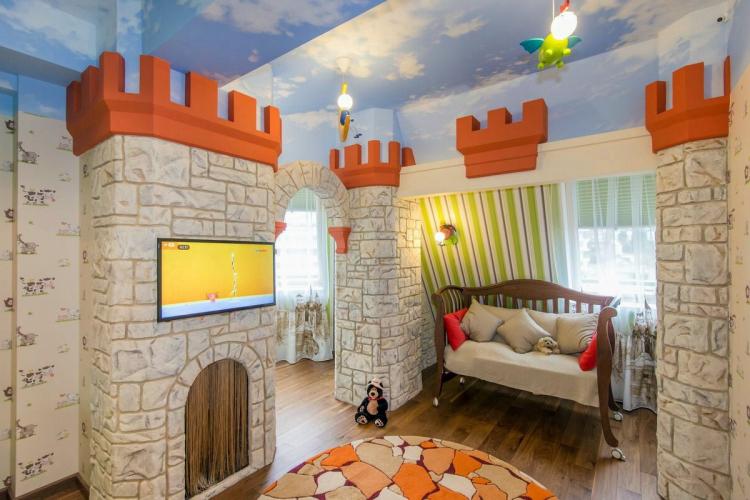
Decorative stone on the balcony
Resistance to external influences is especially important when facing balconies and loggias. The material is not afraid of frost or heat. It does not crack, swell, deform and does not require regular processing, like wood.
The decorative stone looks especially interesting in improvised winter gardens and greenhouses on the balcony.
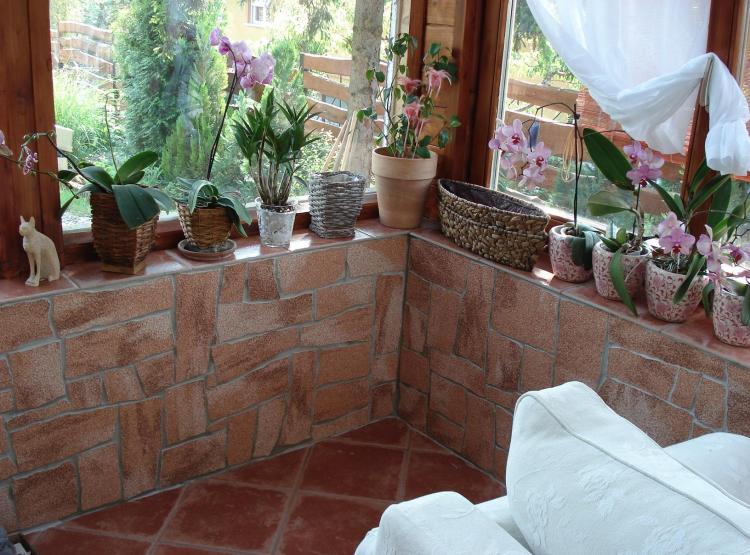
Decorative stone and interior styles
The use of stone finishes is not limited to one style. The richness of textures and shades opens up endless possibilities for designers.
Classic interiors
Luxurious and elegant stone cladding is the most important attribute of pompous classics, baroque, rococo and empire style. Marble of different shades is found on walls, floors, in the form of panels and inserts.
The stone texture is interestingly intertwined with modern trends in neoclassicism. She managed to get rid of excessive decorativeness and a pile of accessories, so inserts for valuable breeds look even more spectacular.

Decorative stone in the loft
In a rough industrial loft, the stone cladding looks like its own.Make it deliberately careless - choose slabs with an unprocessed texture, irregularities, scuffs. A too neat and elegant stone finish is inappropriate in a loft.
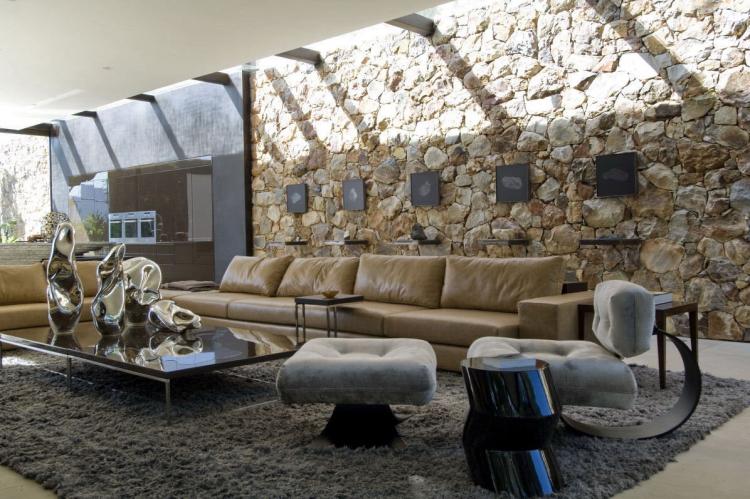
Decorative stone in Art Nouveau
Modern is smooth and soft lines, natural textures, natural asymmetry, complex shades. The decorative stone is easy to process, so it can be given any desired shape.
But avoid strict rectangular plates and plates of the correct angular shape. But the mosaic, round panels, arches look like family.

Decorative stone in minimalism
Minimalism strives for simplicity, brevity and functionality. Artificial stone is quite suitable for these tasks.
The decor in minimalism is not built on accessories, but on textures and accents - this will be the accent of stone inserts. Solid finishes are rare, but several elements look spectacular and help zone the space.
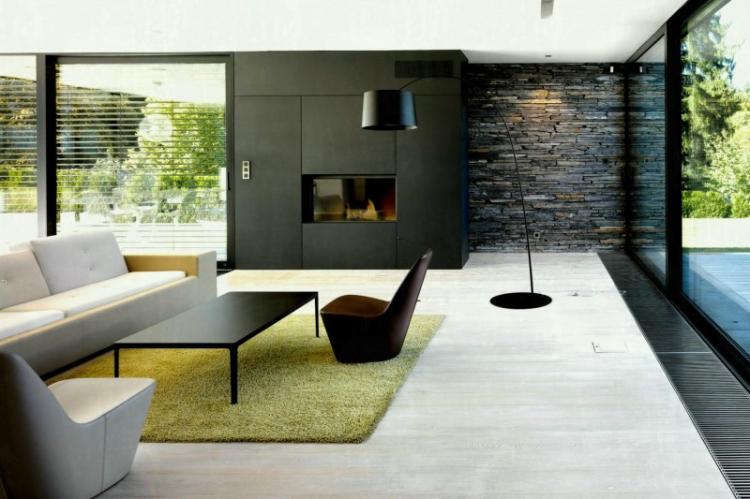
High-tech decorative stone
High-tech tends to artificial textures and materials. But the decorative stone thoroughly imitates the texture of the natural one. It may seem that he does not belong in this style, but it is not!
Of all natural materials, cold and hard stone is the easiest to fit into modern tech and futuristic styles. Give it an angular irregular shape, choose cool black and white shades.
Decorative stone goes well with metal, glass and acrylic - typical high-tech materials.
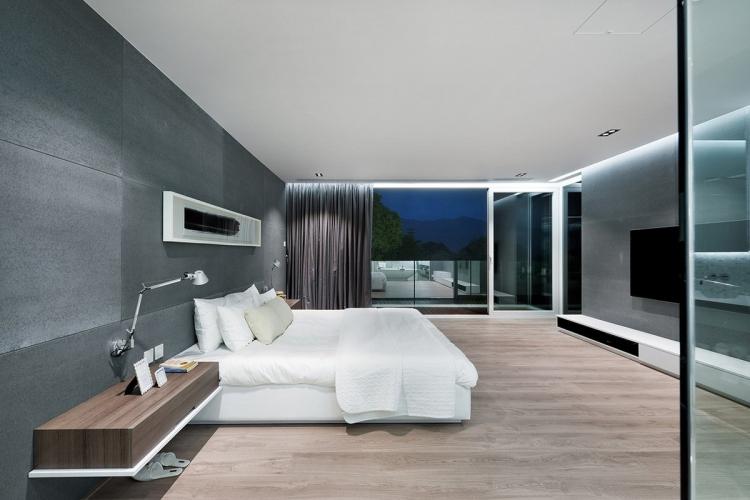
Laying decorative stone
Facing surfaces with decorative stone is almost the same as laying tiles. You will need cement mortar or glue, a level, spatulas. The stone is laid only on a flat base. To do this, use plaster or drywall. Large differences in level will help to hide the profile design.
Close up all seams and joints. Apply several layers of plaster, sand each layer with sandpaper. Remove dust from the surface, use a primer or primer to improve adhesion.
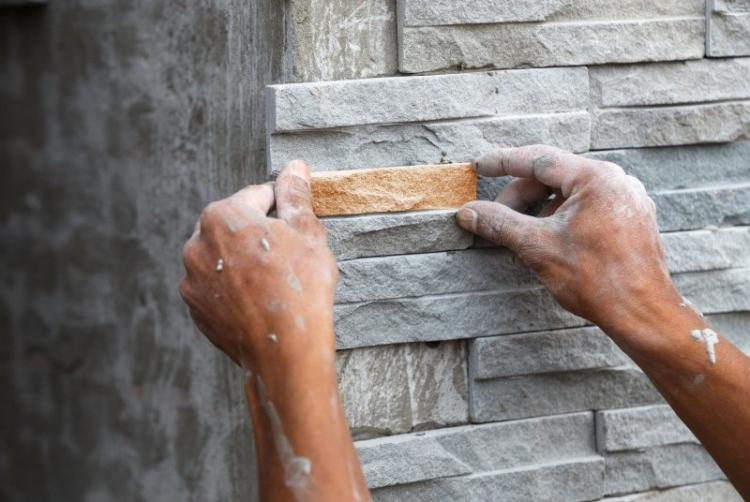
Apply the adhesive mixture in a small layer directly on the surface and leave for a few seconds. Apply another thin layer of mortar to the inside of the stone slab. Lay the stone on the base - the slabs are placed close to each other, with cross dividers.
After the mixture has set, seal the seams and minor defects with decorative putty. To make the surface of the decorative stone shine, use a special varnish.
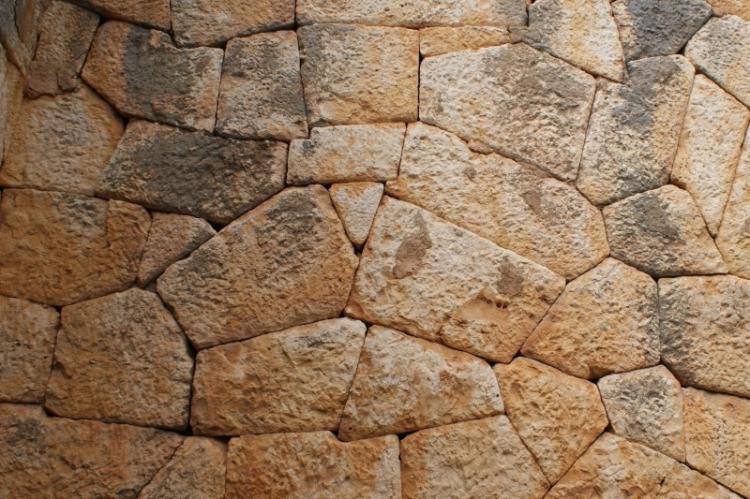
Decorative stone in the interior - photo
The scope of application of decorative stone in interior design and decoration is almost limitless. Therefore, feel free to fantasize and experiment for your pleasure. And for your inspiration, we have compiled this collection of photos!

